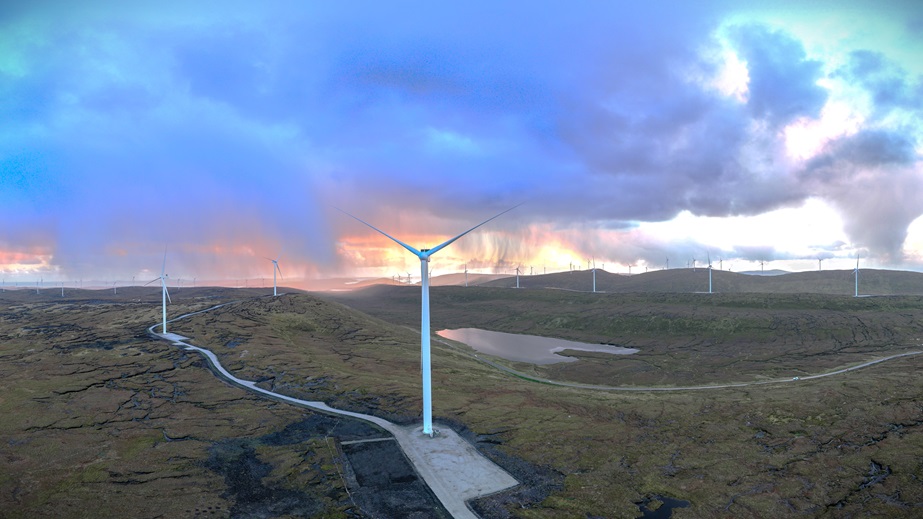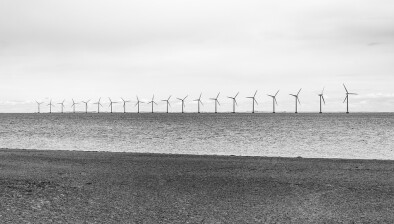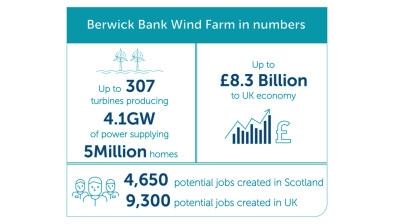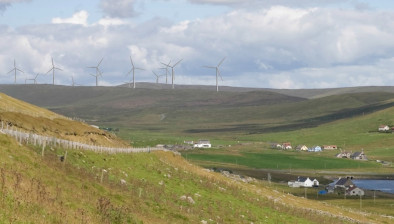Shetland connected to GB electricity grid for first time

The Viking Wind Farm (Image: SSE Renewables)
The Shetland Islands have been connected to the GB electricity grid for the first time following the completion of what is expected to be the most productive onshore wind farm in the UK along with a 160-mile-long subsea link to take power generated on its island site to the mainland.
Featuring 103 Vestas turbines, the Viking Wind Farm has an installed capacity of 443MW and is expected to produce around 1.8 terawatt-hours (TWh) of renewable electricity annually. This output is sufficient to power nearly 500,000 homes each year.
The completion of the Viking Wind Farm and the subsea transmission link represents a £1 billion investment by SSE as part of a £20.5bn commitment to UK clean energy infrastructure by 2027. This investment is one of the largest private commitments to clean energy the country has ever seen.
The subsea cable, a 260km high-voltage direct current (HVDC) link, will transport electricity between Shetland and the GB mainland for the first time. The cable was installed by SSEN Transmission in three campaigns, using specialist cable-laying vessel NKT Victoria. The cable connects a new converter station at Kergord in Shetland to a switching station at Noss Head on the Scottish mainland.
First Minister John Swinney said: “The completion of these projects is a significant step in unlocking the green energy potential of the Shetland islands.
“These developments will not only aid us in our efforts to decarbonise our energy system, but help to stimulate sustainable economic growth in the local area.
“It is welcome that Scotland’s onshore wind capacity continues to expand. This is a vital component of our mission to bring about a just transition to net zero.”
This connection will enable clean energy generated in the Shetland Islands to flow to the rest of the UK, providing a new source of renewable energy and enhancing energy security. The link will also allow for energy to be supplied back to Shetland, ensuring a reliable supply of electricity for the islands.
UK energy secretary, Ed Miliband, commented on the crucial role Viking will play in the UK’s clean energy mission: “By switching on Viking, hundreds of thousands of homes in the Shetlands and right across the country will benefit from cheap, homegrown energy, and this project has created jobs and growth for local communities.
“This shows why we need more developments like this to make Britain a clean energy superpower – and that is why we lifted the onshore wind farm ban in our first 72 hours in Government.
“This will be a crucial part of delivering our mission for clean power by 2030 – reducing our reliance on volatile fossil fuel markets, boosting our energy independence and protecting consumers.”
The opening of the wind farm means the UK has hit a historic milestone of 30GW of wind power capacity with Scotland’s offshore and onshore wind farms contributing 48% of this total.
Operational capacity of 30GW is enough to power over 26 million homes and cut carbon emissions by more than 35 million tonnes a year.
Onshore wind farms across Scotland, from the Borders to the Highlands and Islands, are currently delivering 9.5GW of operational capacity which is set to double with the Scottish Government setting a deployment target of 20GW by 2030.
While offshore wind farms dotted along the country’s coastline have the capability to produce 5GW of clean power at present, the Scottish Government has set a 11GW target of offshore wind deployment by 2030. With considerably more than that already under development this capacity will only continue to increase.
Morag Watson, director of onshore at Scottish Renewables, said: “As wind power continues to shape our future energy system, reaching 30GW of onshore and offshore wind capacity is a significant achievement for the UK.
“Wind power is one of Scotland’s greatest environmental and economic success stories, from the first-ever wind turbine built in Aberdeenshire in 1887 to an industry which now delivers 27,000 jobs and more than £7 billion to our economy while helping combat climate change.
“With 48% of the UK’s operational capacity here in Scotland it is quite fitting that it is the Viking wind farm, a Scottish project, that takes us past the 30GW milestone. It is clear to see that Scotland’s wind power industry continues to be at the forefront of the UK’s clean energy future and will continue to play a central role as we look to achieve net zero.”





















